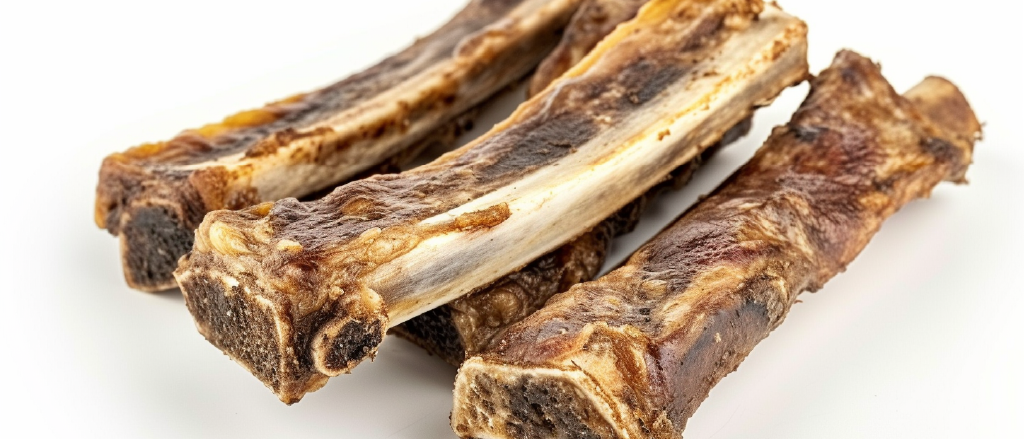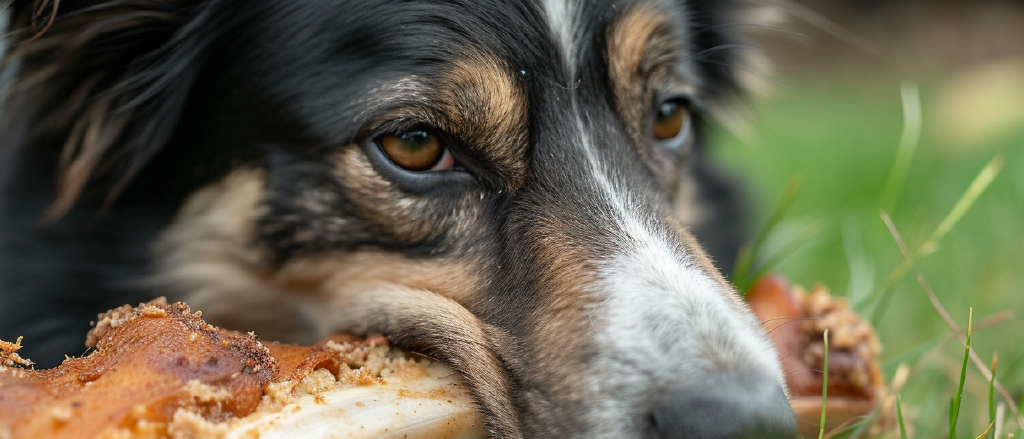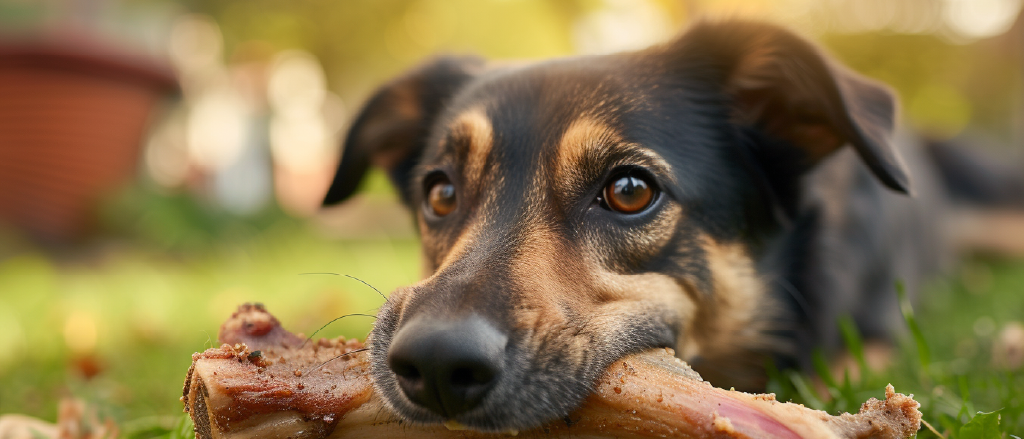
In this article, we aim to highlight the efficacy of raw meaty bones as a preventive measure against gum disease. Not only are they a nutritious and cost-effective solution, they are also a delicious treat for our four-legged companions. We will guide you in selecting the appropriate bone for your dog's breed and size, and provide a list of dos and don'ts to ensure their safety. As practitioners, it is imperative that we educate pet owners on the importance of maintaining oral health for the overall wellbeing of our patients.
The significance of gum disease in dogs cannot be overstated. Beyond causing aesthetic concerns such as discoloured teeth and bad breath, this condition can lead to major discomfort and even tooth loss. Furthermore, persistent bacterial exposure at the gum line weakens the immune system, rendering our furry friends more susceptible to illnesses. Chronic accumulation of immune debris can also result in the clogging of vital organs such as the kidneys. It can also cause inflammation of the heart.
It is crucial to stress the importance of including abrasive elements in a dog's diet. Chewing on bones and cartilage helps to clean and stimulate the teeth and gums, removing food particles that contribute to tartar buildup. This is the natural way that dogs maintain their oral hygiene.
Unfortunately, commercial kibble diets fail to provide this crucial aspect of oral health. The small, smooth kibble often lacks the abrasive properties needed to clean the teeth and gums, leading to the development of dental problems. This is why manufacturers have introduced special "dental formulas," although they only provide minimal benefits. Additionally, the mushy texture and rapid digestion of carbohydrates in kibble diets provide a breeding ground for oral bacteria, as dogs lack the necessary enzyme - amylase - in their saliva to break down carbohydrates.
It is alarming to note that 80% of dogs are fed dry diets and 80% of dogs develop gum disease by the age of three. Is this merely a coincidence? Absolutely not. It is our responsibility as pet owners and animal wellbeing advocates to ensure that our four-legged friends receive a balanced and nutritious diet that includes the essential elements for optimal oral health.
It is imperative to highlight the numerous benefits of incorporating raw bones into a dog's diet. Not only do bones serve as a natural teeth-cleaning tool, they also provide essential nutrition and promote digestive health.

Cleaning Teeth: The unique carnassial tooth present in dogs' jaws makes them well equipped to handle bones with ease. Studies have shown that raw bone consumption reduces dental calculus by up to 82% in just twelve days, without any observed complications.
Nutritional Benefits: Raw bones contain important nutrients such as glucosamine, collagen, chondroitin, vitamins, and minerals essential for bone growth and development. They also provide a source of protein, micro minerals and easily assimilated natural calcium. In addition, bones serve as a source of roughage in a dog's diet, promoting healthy digestive function.
Moreover, the fact that bones are a natural and cost-effective option for providing these benefits makes them a desirable addition to a dog's diet. By incorporating raw bones, pet owners can ensure their dog's dental health and overall well being are being optimally maintained.
Ideal Bones for Small Dogs:
- Chicken Necks
- Duck Feet
- Chicken Wings
Ideal Bones for Medium-Sized Dogs:
- Duck Necks
- Chicken Thighs
- Chicken Carcass
- Turkey Wings
Ideal Bones for Larger Dogs:
- Lamb Ribs
- Lamb Neck Pieces
- Wild Venison Ribs
- Chicken and Duck Carcass
- Turkey Wings
- Fish Heads
Ideal Bones for Very Large Dogs:
- Whole Venison Necks
- Turkey Necks
- Chicken and Duck Carcass
Tips for Feeding Dogs Raw Bones
- Raw bones should make up around 10% of a raw dog food diet. For teeth cleaning, 1-2 bone-chewing sessions per week is sufficient.
- Do not feed cooked bones to dogs as they can result in broken teeth, intestinal blockages, and impaction. Fresh, meaty bones are recommended.
- Dry-fed dogs should have bones separately from their meals to increase the likelihood of proper digestion.
- Avoid hollow marrow bones as they can cause injury to smaller dogs or break teeth in larger dogs.
- Avoid all weight-bearing bones such as leg bones, as they are very hard to break and can cause injury to a dog's teeth.
- Don't feed too much bone at once as it can dilute stomach acids and lead to impaction or constipation.
- To avoid choking, supervise dogs while they chew bones and remove bones if necessary. If choking occurs, seek veterinary attention immediately.




